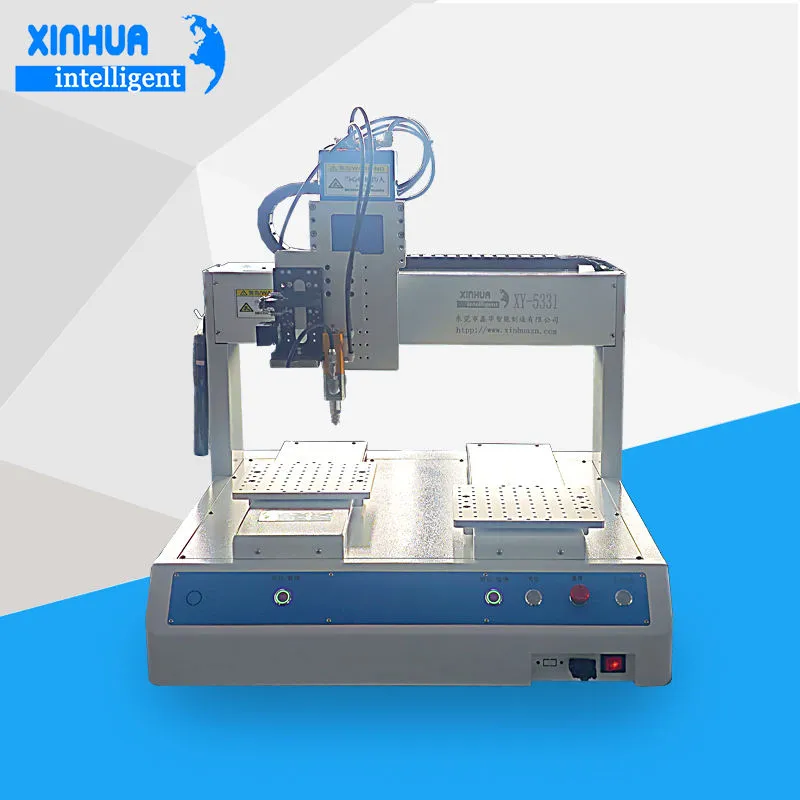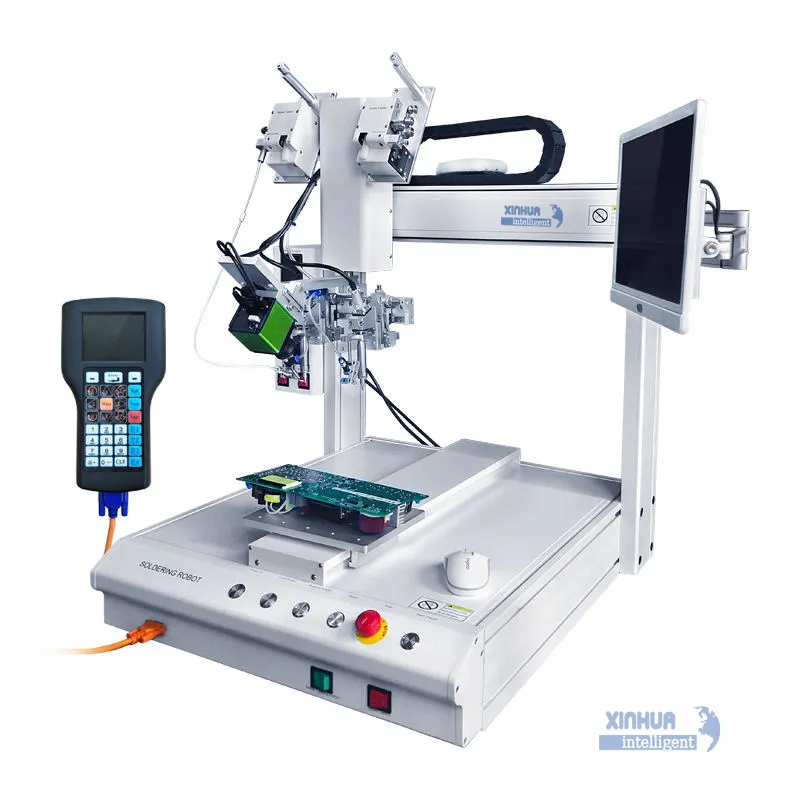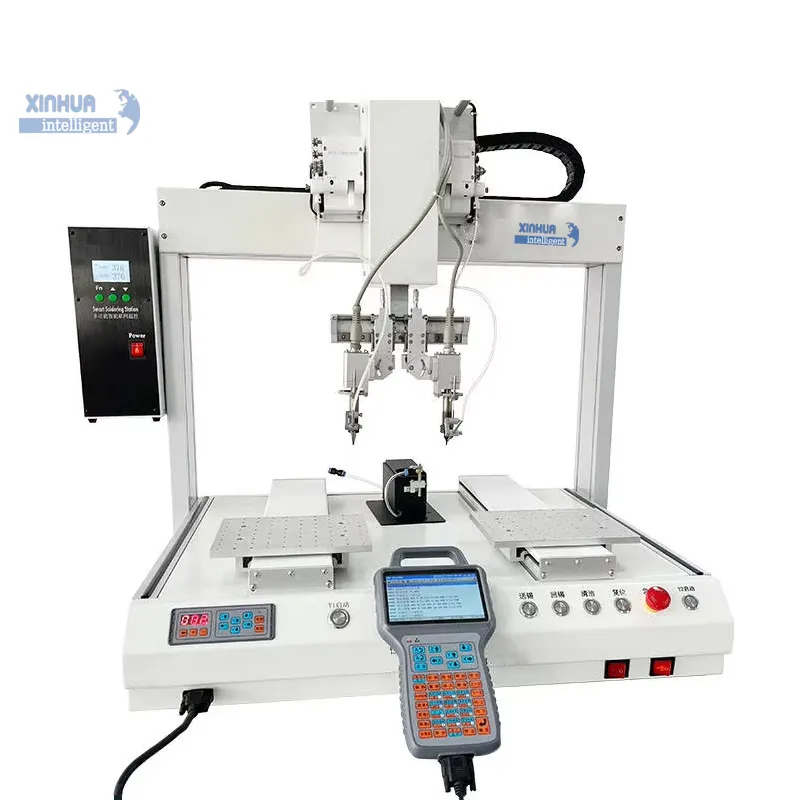
Automated soldering machines work by using programmable robotic arms and control systems to accurately apply heat and solder to components on a printed circuit board (PCB) or other assemblies. The process involves pre-programmed steps to apply flux, preheat the materials, precisely dispense solder, and then cool the joint to form a strong electrical and mechanical bond. These machines offer high precision, consistency, and increased productivity compared to manual soldering, utilizing methods like tip soldering or laser soldering.The exact working principle can vary depending on the type of machine, but here’s a detailed breakdown of the main types and how they operate:
1. Wave Soldering Machines
Used mostly for through-hole components on PCBs.
How they work:
- Preheating: The PCB is preheated to prevent thermal shock and to activate the flux.
- Fluxing: Flux is applied to clean the metal surfaces and improve solder flow.
- Solder Wave Contact: The PCB is passed over a wave of molten solder. The solder adheres to exposed metal pads and component leads.
- Cooling: The board is cooled quickly to solidify the solder joints.
Key features:
- High throughput.
- Consistent solder joints.
- Best for bulk production.
2. Selective Soldering Machines
Used when only specific points on a PCB need soldering (common in mixed technology boards).
How they work:
- The PCB is positioned using a vision system.
- Nozzle(s) dispense solder only on the required pads, often via a mini wave or fountain of molten solder.
- Preheating is applied to prepare the PCB.
- Solder joints are formed only where needed.
Key features:
- Reduces solder waste.
- Can solder complex boards with dense components.
- Can handle boards with sensitive components that cannot tolerate full-wave soldering.
3. Reflow Soldering Machines
Used mostly for surface-mount technology (SMT) components.
How they work:
- Solder Paste Application: Solder paste (a mix of powdered solder and flux) is applied to PCB pads.
- Component Placement: SMT components are placed on the paste using a pick-and-place robot.
-
Reflow Oven: The board passes through a controlled heating profile:
- Preheat: Removes moisture and activates flux.
- Soak: Stabilizes temperature across the board.
- Reflow: Melts the solder paste, forming joints.
- Cooling: Solidifies solder connections.
Key features:
- Precise temperature control.
- Ideal for high-density boards.
- Can solder multiple components simultaneously.
4. Laser Soldering Machines
Used for very precise or micro-scale applications (like LED, sensors).
How they work:
- A laser is directed at solder paste or wire to locally melt the solder.
- Vision systems ensure exact placement.
- No mechanical contact is needed.
Key features:
- Extremely precise.
- Minimal thermal stress on components.
- Ideal for small batches or prototypes.
Common Automation Features
- Vision systems: For precise component alignment.
- Conveyor systems: Move PCBs through various soldering stages.
- Temperature control: Ensures solder melts but components aren’t damaged.
- Robotic arms/nozzles: Accurate application of solder or paste.
- Feedback sensors: Detect misalignment, missing components, or defective joints.
In short, automated soldering machines combine heat, precise solder application, and movement control to create consistent, high-quality solder joints far faster and more reliably than manual soldering.



